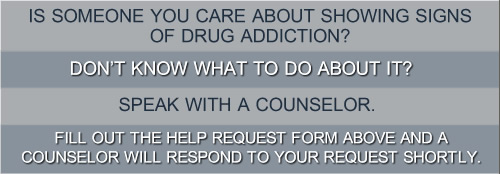- Navigation
- Home
- Causes Of Drug Addiction
- Drug Addiction And Detox
- Drug Addiction Intervention
- Drug Addiction Statistics
- Drug Addiction Treatment
- Drug Withdrawal Symptoms
- Effects Of Drug Addiction
- Facts About Drug Addiction
- Opiate Addiction
- Prescription Drug Addiction
- Teen Drug Addiction
- What Is Drug Addiction

Facts About Drug Addiction
Getting the facts about drug addiction from a reliable resource, is something that you have to do when you plan on using the information for different purposes. Whether it is going to be used in some kind of classroom setting, to teach kids about drugs, or whether the facts about drug addiction are going to be used to try and reach an addict, and help them with their addiction, making sure they are relevant, and reach the right group, are some things to keep in mind. The information not only has to be correct, but it also has to be relevant and up to date if you want to make the problem well known.
There are many places to get facts about drug addiction from; depending on the type of facts you want to find, what you want to tell users, or how much you want them to get from a presentation, there are different sets of facts about drug addiction that can be used, for different purposes. When using these facts to reach abusers and drug addicts, you want them to be as gruesome as possible, so that you can really affect the user, and get them to see the many dangers of the drugs they are using. The more real they are, and the harsher the facts are, the greater the chances they are going to stick in the minds of those who are using drugs, and get them to possibly change their ways and their addiction. Making the facts about death and the dangers of drug use and abuse is going to make a much larger impact than those facts that are sugar coated, or do not reach the heart of the matter.
No matter who you are trying to reach, using the latest facts about drug addiction, and those that are most powerful, is something that will go much deeper than the facts that are not too gruesome. The worse they are (in this case), the better. By helping the user and abuser see the error of their ways, and see what the drugs are doing to their system, they might consider quitting, and getting the help that they are going to need when they are trying to get clean. So, turning to the brutal facts about drug addiction, and those that touch the soul deepest, are possibly the best set of facts you can use for this particular purpose of helping the drug user and abuser.
Getting up to date information, from the right sources, and double checking the accuracy of your sources and facts about drug addiction, will also help make the presentation more powerful. So, getting things from the right source, and knowing that everything is properly stated when you do present it, are some of the things that also have to be considered, in order to ensure the users will listen, will get the point of the presentation, and will likely try to go out and get the help they need to quit.
- As of 2009, over 30 million Americans aged 12 or older reported driving under the influence of alcohol at least once in the past year.
- Over 30 million people report drinking and driving within the past year, with an estimated 17,000 deaths each year as a result of drunk driving.
- Alcoholism causes 500 million lost workdays per year.
- Alcoholism is responsible for an estimated 20 to 30% of esophagus cancer, liver cancer, cirrhosis of the liver and epilepsy.
- Marijuana is ranked second in terms of use and abuse in the United States.
- Over 17 million individuals in the United States have used marijuana within the past 30 days, and there are over 2 million new users each year.
- Studies have shown that marijuana users are more likely than non users to continue on using more hardcore drugs.
- As of 2009, over 3 million 12 to 17 year-olds had used marijuana in the past year.
- Recent drug trends show a troubling rise in the rates of nonmedical use of prescription drugs among Americans, with an estimated 5 million Americans using these drugs at much greater frequency and dosage than is prescribed or with no prescription at all.
- Abuse of prescription pain relievers is the biggest problem in terms of prescription drug abuse and addiction in the U.S., followed by tranquilizers and stimulants.
- Because individuals who abuse prescription drugs to get high and in ways which they are not prescribed, and often in conjunction with alcohol, this type of drug addiction is responsible for thousands of deaths each year in the United States.
- An estimated 670,000 youths, 1.5 million young adults, and 3.0 million adults aged 26 or older abusing prescription drugs non-medically each year.
- There are an estimated 2.0 million current cocaine users, 750,000 to 1 million current hardcore heroin addicts and an estimated 1 million current methamphetamine users in the nation.
- �''Club drugs�'' such as Ecstasy are also extremely common drugs of abuse, with nearly 14 million Americans reporting having used the drug at least once in their lifetime.
- Rates of use of marijuana among 8th, 10th, and 12th graders in the U.S. rose in 2010, including rates of daily use.
- In 2010 over 21% of high school seniors surveyed reported using marijuana in the past 30 days.
- After several years of decline, current and past-year use of ecstasy among 8th and 10th graders has increased significantly. This is probably due to the declines in perceived risk associated with use seen of the drug that has been noticed over the past several years.
- Significant increases in annual and monthly use rates of LSD have been reported among 12th graders.
- Rates of past-year use of inhalants have remained steady from 2009 to 2010, with 8% of 8th graders reporting past-year use of inhalants.
- Studies show that youth with high levels of emotional problems are nearly twice as likely as those with low problem scores to have used alcohol in the past month.
- Prescription and over-the-counter medications are the top drugs abused among high school seniors in the U.S.
- Rates of past-year nonmedical use of Oxycontin have remained unchanged among high school students and have increased among 10th graders over the past 5 years.
- Rates of past-year nonmedical use of Adderall and OTC cough and cold medicines among 12th graders have remained relatively high at 6.5 percent.
- Eight out of ten States which placed in the top fifth for use of an illicit drug for persons aged 12 or older are also ranked in the top fifth for past month use of marijuana.
- Drug abuse and addiction results in consequences including lost productivity and health consequences and crime. These consequences are associated with costs which exceed $600 billion each year.
- Questions?
